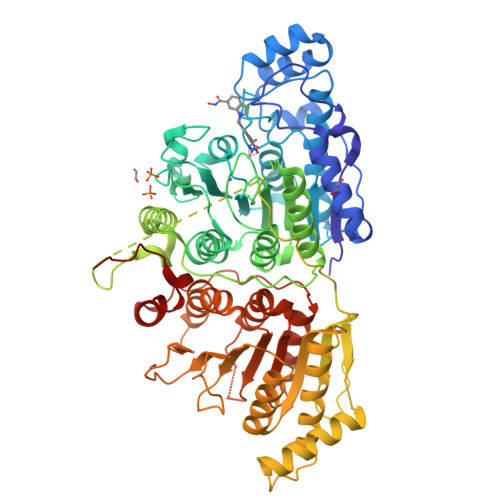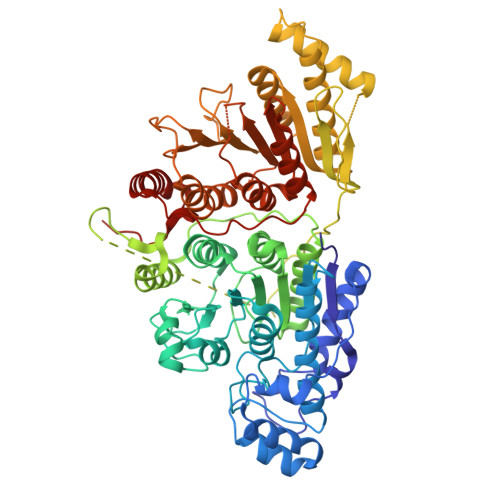Design and Synthesis of Dihydroxamic Acids as HDAC6/8/10 Inhibitors.
Morgen, M., Steimbach, R.R., Geraldy, M., Hellweg, L., Sehr, P., Ridinger, J., Witt, O., Oehme, I., Herbst-Gervasoni, C.J., Osko, J.D., Porter, N.J., Christianson, D.W., Gunkel, N., Miller, A.K.(2020) ChemMedChem 15: 1163-1174
- PubMed: 32348628
- DOI: https://doi.org/10.1002/cmdc.202000149
- Primary Citation of Related Structures:
6VNQ, 6VNR - PubMed Abstract:
We report the synthesis and evaluation of a class of selective multitarget agents for the inhibition of HDAC6, HDAC8, and HDAC10. The concept for this study grew out of a structural analysis of the two selective inhibitors Tubastatin A (HDAC6/10) and PCI-34051 (HDAC8), which we recognized share the same N-benzylindole core. Hybridization of the two inhibitor structures resulted in dihydroxamic acids with benzyl-indole and -indazole core motifs. These substances exhibit potent activity against HDAC6, HDAC8, and HDAC10, while retaining selectivity over HDAC1, HDAC2, and HDAC3. The best substance inhibited the viability of the SK-N-BE(2)C neuroblastoma cell line with an IC 50 value similar to a combination treatment with Tubastatin A and PCI-34051. This compound class establishes a proof of concept for such hybrid molecules and could serve as a starting point for the further development of enhanced HDAC6/8/10 inhibitors.
Organizational Affiliation:
Cancer Drug Development Group, German Cancer Research Center (DKFZ), Im Neuenheimer Feld 280, 69120, Heidelberg, Germany.






















